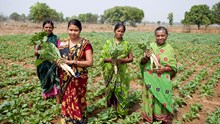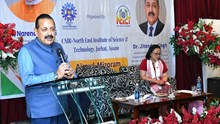
Pigs hold a special place in the lives of farmers in Northeast India, especially in Mizoram. Among them, the Zovawk pig, an indigenous variety, stands out as a hardy, locally adapted animal that has been a companion of Mizo households for generations. The name itself tells its story: “Zo” means Mizo and “vawk” means pig. These pigs are not just animals but part of the community’s culture, economy, and diet. Farmers keep them for pork, which is highly preferred in the local market, and for manure, which enriches the soil for crops.
Distribution and Habitat
The Zovawk pig is mainly found in Aizawl, Lunglei, Champhai, Saiha, Kolasib, Lawngtlai, and Mamit districts of Mizoram. These are hilly areas with scattered villages, forests, and household dwellings. Traditionally, pigs roam around freely, scavenging for food near homes, fields, and forests. Their ability to thrive in such conditions makes them a perfect fit for the region where modern feed and intensive systems are often difficult to maintain.
Physical Features of Zovawk
This pig has a distinct appearance that farmers easily recognize. Most of them are black in color, sometimes with a white star on the forehead, patches on the belly, or white “boots” on the legs. They have erect ears, a concave snout, a potbelly, and long bristles along the back. Their size is medium compared to exotic breeds, with adult males weighing around 54 kg and females about 58 kg. Despite their smaller body size, their meat quality and taste make them highly demanded in local markets.
Social Nature of Zovawk
What makes Zovawk pigs truly special is their behavior. They are social animals and never like to stay alone. Traditionally, they forage together in groups, sleep under houses in a “head-to-tail” pattern, and communicate with each other through grunts. Farmers often share how these pigs warn each other of danger or call their young ones with specific sounds. In times of threat, the group forms a protective circle with their snouts pointing outward and the weaker pigs in the center. Such instincts make them resilient and easy to manage even under open rearing systems.
Management Practices
Most farmers rear Zovawk pigs under extensive systems. The pigs are allowed to scavenge freely, feeding on kitchen waste, forest produce, and whatever they can find around the household. This reduces feed costs, which is a major benefit for poor farmers. However, this system also means that pigs depend heavily on natural resources, and productivity may remain low compared to commercial piggery.
Farmers usually keep herds of 3 to 10 pigs, though larger groups can be seen in villages. Adult males are often used for breeding, while females are kept for producing piglets. Zovawk pigs are known for early maturity, with females giving birth as early as 10 months of age. On average, they produce 7 piglets per litter, though the number may range from 2 to 12. Their parturition interval is about 5 to 6 months, which means a farmer can expect 2 litters in a year.
Performance and Economic Importance
The dressing percentage of Zovawk pigs is around 70 percent, which means a good amount of meat can be obtained from each animal. Pork from these pigs is highly preferred in Mizoram due to its taste and quality, fetching better prices in the local market. Apart from pork, manure from the pigs enriches the soil and supports crop production, especially in shifting cultivation areas.
For many families, pig rearing is not just about income but also about food security. Pork is a staple in Mizo cuisine, and having pigs at home ensures a steady supply. In festive seasons and community gatherings, pigs are central to celebrations, strengthening their cultural and social value.
Adaptability and Peculiar Traits
One of the biggest strengths of Zovawk pigs is their adaptability to the hilly terrain of Mizoram. They are well suited to the humid climate and rugged conditions where exotic pig breeds often fail. They require minimal inputs, making them ideal for small and marginal farmers. Moreover, their resistance to diseases is relatively better under local conditions.
The unique social behavior of Zovawk pigs, their group protection instincts, and communication through grunts add to their charm and make them different from commercial pig breeds.
The Zovawk pig is more than just livestock in Mizoram. It is a part of the lifestyle, economy, and tradition of the people. With its ability to thrive on minimal resources, produce tasty pork, and adapt to hilly conditions, this indigenous breed offers both nutritional and financial security to rural families. There is great potential to improve productivity through better management and scientific breeding, while also conserving this valuable local genetic resource. For farmers, Zovawk pigs represent not only a source of livelihood but also a symbol of resilience and community living in the hills of Mizoram.
















